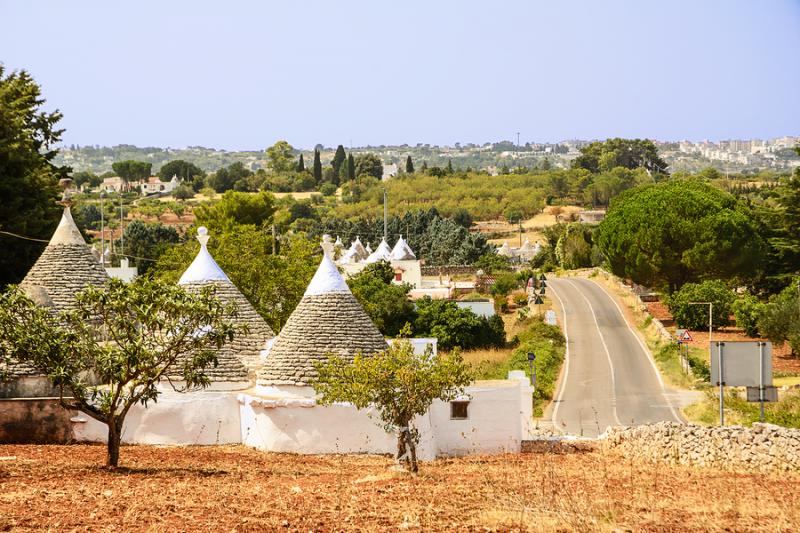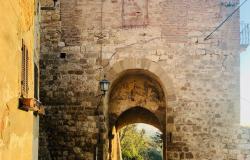Puglia’s Itria Valley
ITA:

Use player to listen to Italian version
Puglia’s Valle d'Itria welcomes visitors with expanses of olive trees, bright red soil, dry stone walls and trulli. Also known as the Valle dei Trulli, for the numerous dry stone huts with a conical roof that are typical of this valley, it extends between the southern provinces of Bari, Brindisi and Taranto.
Stretches of woods and Mediterranean shrub alternate with numerous vineyards producing such white wines as Locorotondo DOC and Martina Franca DOC, and with centuries-old olive groves from which extra virgin olive oil is produced.
In the heart of the valley is Alberobello, a Unesco World Heritage site synonym with trulli, which visitors can admire strolling around the Monti and Aja Piccola districts.
The whole countryside is indeed dotted with trulli, numerous in the villages Cisternino and Locorotondo, ranked among the most beautiful villages in Italy. Locorotondo was, until the mid-19th century, known as ‘Luogorotondo’ for its round urban design.
Also of note are the Caves of Castellana, a system of caverns of karst origin, where stalagmites, stalactites, canyons and caves, such as the Grave and the Bianca, dot a three-km long pathway that is more than 60 meters deep.
Martina Franca, near Bari, is known for its Baroque architecture and for its summer opera festival, the Festival della Valle d'Itria.
Finally, Ostuni, known as ‘white city’ because its historic center was once entirely painted in white lime, and also at the center of production of high quality olive oil and wine.
La Valle d'Itria in Puglia accoglie i visitatori con distese di ulivi, terra rossa, muretti a secco e trulli. Conosciuta anche come la Valle dei Trulli, per le tipiche costruzioni coniche in pietra a secco, si estende nelle province meridionali di Bari, Brindisi e Taranto.
Distese di boschi e macchia mediterranea si alternano a numerosi vigneti che producono vini bianchi come il Locorotondo DOC e il Martina Franca DOC, e a uliveti centenari dai quali si ottiene olio extravergine d'oliva.
Nel cuore della valle c'è Alberobello, sito Unesco, sinonimo di trulli, che i visitatori possono ammirare passeggiando per i rioni Monti e Aja Piccola.
Tutta la campagna è in effetti costellata di trulli, numerosi a Cisternino e Locorotondo, classificati tra i borghi più belli d'Italia. Locorotondo era chiamato fino alla metà del 19° secolo ‘Luogorotondo’ per la sua forma rotonda.
Notevoli sono anche le Grotte di Castellana, un sistema di caverne di origine carsica, in cui stalagmiti, stalattiti, canyon e grotte, come la Grave e la Bianca, punteggiano un percorso lungo tre chilometri che si addentra per 60 metri in profondità.
Martina Franca, vicino a Bari, è nota per la sua architettura barocca e per il festival dell'opera d'estate, il Festival della Valle d'Itria.
Infine, Ostuni, conosciuta come ‘città bianca’ perché il suo centro storico era un tempo interamente dipinto con calce bianca; si trova al centro di un’area di produzione di olio e vino di alta qualità.











